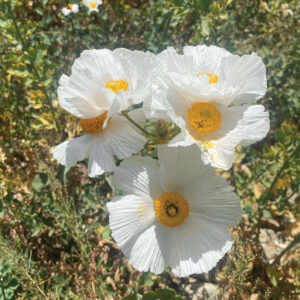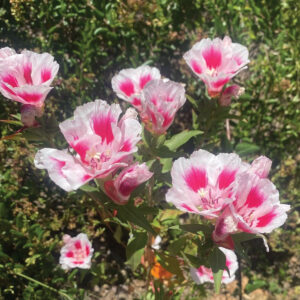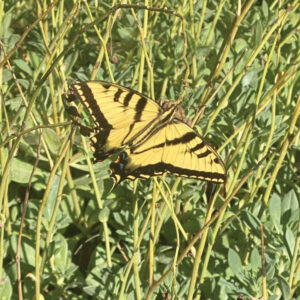Cuphea plants are great shrubs/perennials (depends on who you talk to) they are evergreen and come in lots of different sizes and colors. They can be used as a border plant, ground cover, or to fit a tight spot. I love that they are colorful, easy care, and in some cases just the right size for the overly small planter beds that I sometimes come up against! There are two very different types of cuphea that grow nicely in Southern California, the hysopifolia type (Mexican Heathers) which are a more shrub like type with wood stems and the ignea and lutea types (cigar plants) which are more like perennials with a softer stem.
Mexican Heathers (woody types)
 Photo courtesy of Worldwide Exotics
Photo courtesy of Worldwide Exotics
These like good drainage with regular garden water. They attract hummingbirds, butterflies and bees and are easily pruned to shape. The young plants are happy when given a fertilizer with extra phosphorus. This encourages root development, which in turn leads to beautiful flowers. Phosphorus is the second number on the fertilizer bag – so look for a higher middle number and you will have the right type. Well-established plants will also benefit from fertilization – especially in the spring.
Deadhead the flower blooms so you get lots more blooms during the growing season. If you aren’t sure what deadheading is, I’ll explain. Deadheading is pinching back the dead flowers at their base. When you do this you allow the plant to utilize the available nutrients for growing – not send nutrients to the dead flower head.
Cigar Plant (softer, more perennial types)
These types are known by the common name of cigar plant and firecracker plant. They have a long cigar shaped flower, in red/orange, pink, and even a yellow – they are very attractive to hummingbirds. They flower from summer and can last well into the winter months – only being cut off when frost (may) hit.
Once your cigar plant is well established in your garden it is a good idea to pinch it back at the tips, this will encourage more branching and in turn that means more flowers… You should prune your Cuphea so that it stays neat; it is also a pretty rapid grower so if you select one that is too large for the area you’ll need to keep up on it to keep it contained. You can also prune it back to the ground to promote healthy, new growth. So prune hard in early spring and late fall to shape. They don’t bloom well in full shade, but a little protection from mid day sun is good and make sure that you don’t over water.
If you live in a cold area the plant can be grown as a perennial by over wintering the plants indoors.
For more about my blog please visit my website!









